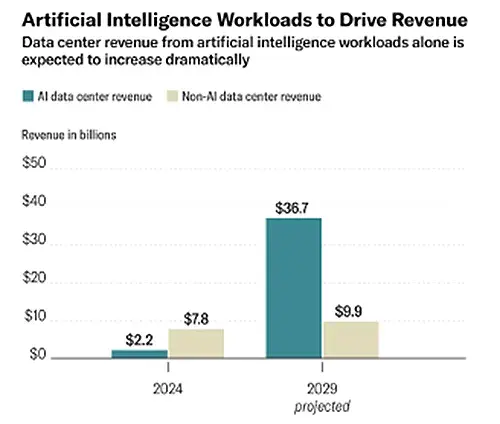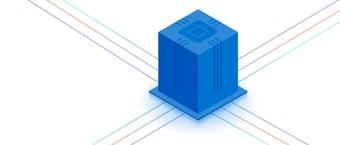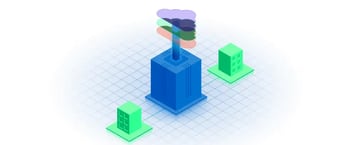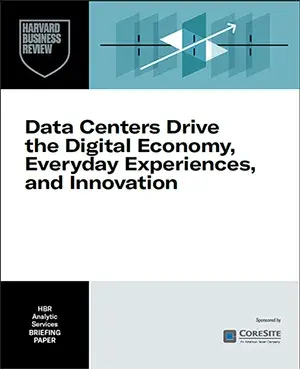
Cloud and Ecosystem Connectivity: That’s Money
I like to think of colocation and data centers the way I think about money. You could keep your cash stuffed into a mattress – that’s kind of like the on-premises data center route. It might feel safe, but it can be risky and it’s not going to grow. But if you put your money in a bank, you immediately gain security and options. You can put it into a high-interest savings account, invest it in a CD or other financial product, it’s insured by the FDIC, and you can transfer it as needed.
That’s exactly what CoreSite can do for your digital infrastructure. We enable putting assets such as data and applications in locations that are protected and provide connections that enable “investing” in digital ecosystems across our entire data center platform, as well as public clouds such as AWS, Oracle, Google and Azure.
By plugging directly into clouds and digital ecosystems, CoreSite colocation unlocks fast, reliable, highly secure connections that make it easier to keep pace with a digital-first world.
Beyond Four Walls: The Power of the Platform
When companies evaluate data centers, their checklist typically starts with power, cooling and square footage. Important, yes – but those are table stakes. What really sets CoreSite colocation apart is how we connect you to the cloud, your digital ecosystem partners, and the networking capabilities that enable access to our nation-wide data center portfolio.
When you are deployed in a CoreSite data center, you can very easily move workloads and connect with partners, carriers and service providers located in any of our other data centers – you have access to a digital platform comprised of data centers as well as any cloud region/availability zone. Here are a few more advantages:
- With direct connections to cloud and private networks, you get consistent low-latency performance and guaranteed bandwidth. You aren’t competing with the unpredictability of the public internet, where congestion can slow you down when you need reliability the most. Instead, your services will execute quickly which, as I’ll get into, is more important than ever.
- You gain more flexibility. Once you are part of a connected ecosystem, monetizing services and solutions, optimizing workload distribution or developing partnerships are far simpler – allowing infrastructure to catalyze revenue streams and grow market share.
- Cloud connectivity creates redundancy, reducing the need for a hot/warm/cold data center approach to resilience. It’s common to want or need access to multiple cloud regions. By building multiple paths across cloud regions, businesses can keep running even if a disruption occurs. That built-in resilience is the foundation of disaster recovery and business continuity.
- Security is improved. Private connections lower risk and keep sensitive data on trusted networks. In case of a cyber incident, they provide a clean environment to recover from, helping businesses get back online faster.
- Scaling becomes easier and more cost-effective, too. Businesses can spin up cloud resources on demand and pay only for the services they use, instead of paying for backup sites or resources that sit idle.
The AI Factor

Artificial intelligence (AI) is amplifying the importance of connectivity. Training AI models typically happens in hyperscale, single-tenant environments – think the big public clouds or single-tenant facilities. But inference, where AI delivers real value, happens close to the user.
This is where colocation and cloud connectivity play critical roles. Direct connections to cloud, neocloud and AI providers make it possible to move data between training and inference/production environments with low latency and consistent performance.
Those inference environments increasingly will be colocation data centers, according to one key takeaway found in the new Harvard Business Review Analytic Services Briefing Paper: Data Centers Drive the Digital Economy, Everyday Experiences, and Innovation.1
Colocation doesn’t replace the cloud – it extends it, while also enabling enterprises to run AI in on-prem data centers and draw on public cloud and neocloud resources as needed. By combining the scale of public cloud for training with the high-density capabilities and proximity of colocation for inference, businesses can get the best of both worlds.
This mirrors what cloud providers did in the early 2010s: centralize the heavy lifting, then extend into colocation for access points which, by the way, was a primary reason that the Open Cloud Exchange® (OCX) was developed. The OCX is our network and network services solution that you use to manage the interconnection across our data center platform that I’ve been talking about. AI companies are now following that same playbook, and the OCX is helping facilitate their strategy. Furthermore, CoreSite data centers offer space, power and cooling plus connectivity required for inferencing where it’s needed, in inference zones, which is becoming a significant consideration for AI.
Making Your Money – and Your Infrastructure – Work For You
We live in a world where infrastructure can’t be treated as a fixed asset anymore. Business happens through interconnection; workloads need to be highly dynamic and technologies like AI are starting to see the revenue return from investments.
We all want to get the best return on investments. The smartest move is to put your money on infrastructure somewhere secure, flexible and connected – where it can grow with you and keep delivering value. That’s the promise of colocation: a digital foundation where connectivity is money.
Know More
To help technology leaders navigate the evolving demands of hybrid IT, Harvard Business Review Analytic Services in association with CoreSite commissioned an in-depth report on the future of digital infrastructure. This independent analysis highlights how enterprises are using colocation and interconnection to:
- Power AI and data-intensive workloads
- Improve sustainability and operational efficiency
- Create scalable, future-ready environments
Get the Harvard Business Review Analytic Services Report
References
1. Data Centers Drive the Digital Economy, Everyday Experience, and Innovation, Harvard Business Review, 2025











